I've made a few experiments and each experiment led to the apparition of color.
As I can't do more experiments, I want to sample by size=30 and see what frequency table (of colors) I could obtain for 1000 sampling. The resulting frequency table should be the sum of the 1000 frequency table.
I think about concatenating table as follows and try to agregate, but it did not work:
mydata=structure(list(Date = structure(c(11L, 1L, 9L, 9L, 10L, 1L, 2L,
3L, 4L, 4L, 5L, 5L, 5L, 5L, 5L, 6L, 7L, 4L, 4L, 4L, 6L, 6L, 11L,
5L, 4L, 7L, 10L, 6L, 6L, 2L, 5L, 7L, 11L, 1L, 9L, 11L, 11L, 11L,
1L, 1L), .Label = c("01/02/2016", "02/02/2016", "03/02/2016",
"08/02/2016", "10/02/2016", "11/02/2016", "16/02/2016", "22/02/2016",
"26/01/2016", "27/01/2016", "28/01/2016"), class = "factor"),
Color = structure(c(30L, 33L, 11L, 1L, 18L, 18L, 11L,
16L, 19L, 19L, 22L, 1L, 18L, 18L, 13L, 14L, 13L, 18L, 24L,
24L, 11L, 24L, 2L, 33L, 25L, 1L, 30L, 5L, 24L, 18L, 13L,
35L, 19L, 19L, 18L, 23L, 19L, 8L, 19L, 14L), .Label = c("ARD",
"ARP", "BBB", "BIE", "CFX", "CHR", "DDD", "DOO", "EAU", "ELY",
"EPI", "ETR", "GEN", "GER", "GGG", "GIS", "ISE", "JUV", "LER",
"LES", "LON", "LYR", "MON", "NER", "NGY", "NOJ", "NYO", "ORI",
"PEO", "RAY", "RRR", "RSI", "SEI", "SEP", "VIL", "XQU", "YYY",
"ZYZ"), class = "factor"), Categorie = structure(c(1L, 1L,
1L, 1L, 1L, 1L, 1L, 1L, 1L, 1L, 1L, 1L, 1L, 1L, 1L, 1L, 1L,
1L, 1L, 1L, 1L, 1L, 1L, 1L, 1L, 1L, 1L, 1L, 1L, 1L, 1L, 1L,
1L, 1L, 1L, 1L, 1L, 1L, 1L, 1L), .Label = c("1", "1,2", "1,2,3",
"1,3", "2", "2,3", "3", "4", "5"), class = "factor"), Portion_Longueur = c(3L,
4L, 1L, 1L, 2L, 4L, 5L, 6L, 7L, 7L, 8L, 8L, 9L, 8L, 8L, 9L,
11L, 7L, 7L, 7L, 9L, 8L, 3L, 8L, 7L, 11L, 2L, 9L, 8L, 5L,
8L, 12L, 3L, 4L, 1L, 3L, 3L, 3L, 4L, 5L)), .Names = c("Date",
"Color", "Categorie", "Portion_Longueur"), row.names = c(NA,
40L), class = "data.frame")
for (i in 1:1000) {
mysamp= sample(mydata$Color,size=30)
x=data.frame(table(mysamp))
if (i==1) w=x
else w <- c(w, x)
}
aggregate(w$Freq, by=list(Color=w$mysamp), FUN=sum)
Example, for 3 sampling, for (i in 1:3) I expect have sum as follow :

But I do not have Sum, instead I have:
Color x
1 ARD 2
2 ARP 1
3 BBB 0
4 BIE 0
5 CFX 0
6 CHR 0
7 DDD 0
8 DOO 1
9 EAU 0
10 ELY 0
11 EPI 3
12 ETR 0
13 GEN 2
14 GER 2
15 GGG 0
16 GIS 1
17 ISE 0
18 JUV 4
19 LER 5
20 LES 0
21 LON 0
22 LYR 1
23 MON 1
24 NER 2
25 NGY 1
26 NOJ 0
27 NYO 0
28 ORI 0
29 PEO 0
30 RAY 1
31 RRR 0
32 RSI 0
33 SEI 2
34 SEP 0
35 VIL 1
36 XQU 0
37 YYY 0
38 ZYZ 0
How to do this ?
Thanks a lot